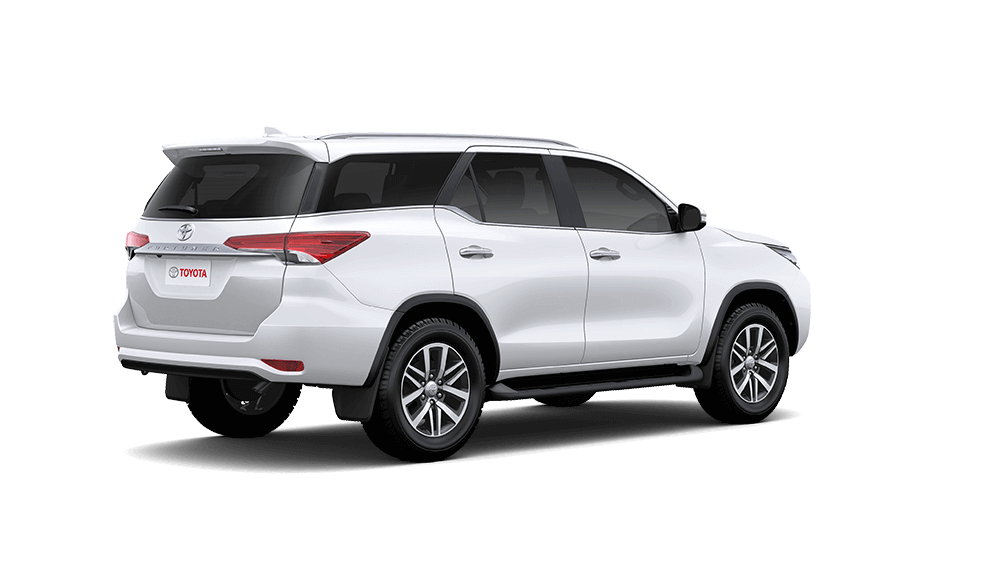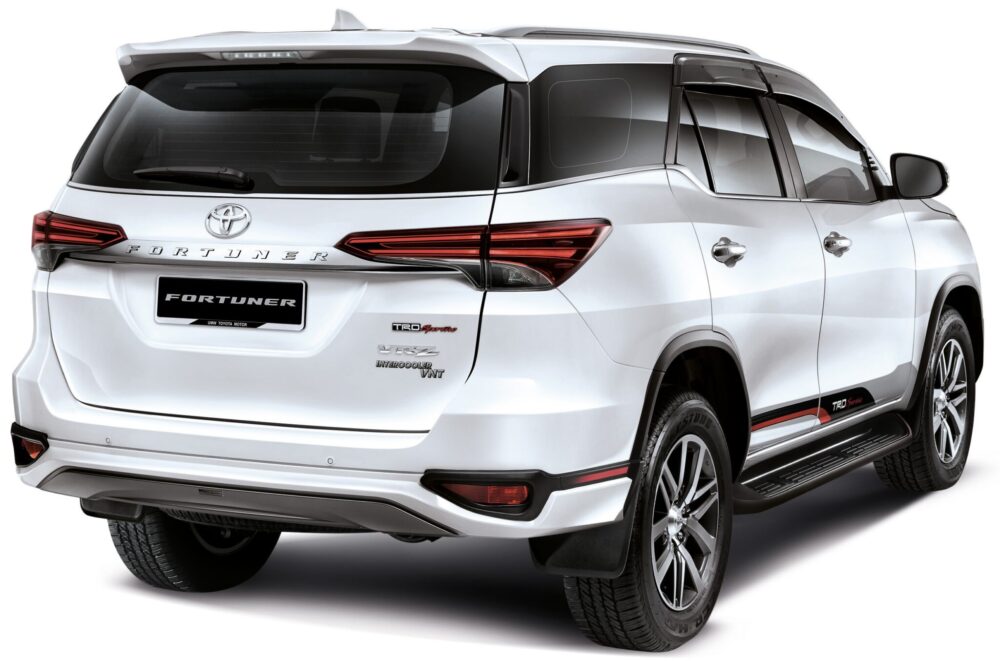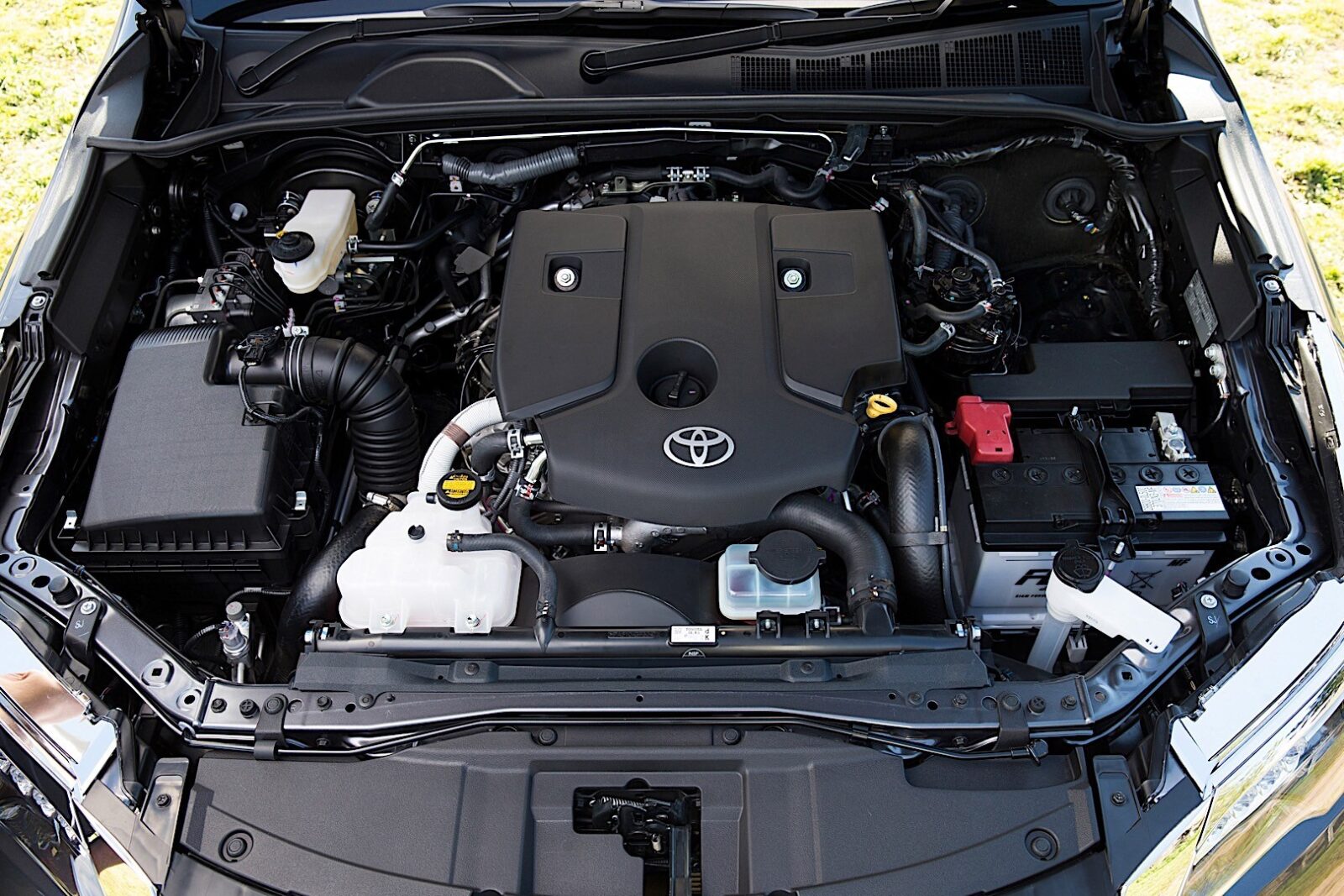The Pakistani automotive industry has recently seen several new companies enter the market, thanks to the enactment of the Automotive… Read More
The post Kia Sorento Vs. Toyota Fortuner – Goliath vs. Goliath? [Comparison] appeared first on .
The Pakistani automotive industry has recently seen several new companies enter the market, thanks to the enactment of the Automotive Development Policy (ADP) 2016-21. With the market recently having received new options in each segment and with more to come, the level of competition finally seems to be rising.
The latest addition to the midsize SUV segment has been the third-generation Kia Sorento SUV. Previously, the Toyota Fortuner had been the only option available in the local midsize SUV segment, especially among the locally assembled SUVs. However, with the introduction of Kia Sorento, the battle for the top spot in the midsize segment of Pakistan is on between the heavy hitters from Japan and Korea.
Both SUVs are fairly good vehicles with their own strengths and weaknesses that determine their desirability among their target demographic in Pakistan.
Here is a breakdown of the features and characteristics of both SUVs:

Much like all modern Toyotas, the Fortuner is relatively simple, but it does have a few quirky design elements like pointy and razor-sharp headlights that give it an aggressive look. Besides that and a pair of fog lights, the front is plain and simple.

ALSO READ
Lenovo ThinkPad X13 Gen 2 Launched With Ryzen 5000 Processors, 5G, and More
However, the TRD Sportivo package has added cosmetic flare with aggressive bumper extensions, a blacked-out front grille, and black trim around the foglights that makes the front of the SUV look more menacing.
The tone of simplicity continues along the sides that have power-operated side mirrors with built-in turn signals, while the rest of the profile is plain-looking. The sides feature silver roof rails, chrome door handles, a running board, and 18-inch rims that give the SUV a clean appearance.
The TRD trim has a black and white striped TRD decal that starts from the middle of the front doors on either side and extends to the rear bumper, and a new set of 18-inch alloy rims with a special TRD design that is unique to this trim level.

The rear end of the Fortuner looks relatively sharp and sporty. At the top of the tailgate is a ducktail spoiler, and below the windshield are sharp and sleek-looking tail lights in the middle of which is a chrome panel embossed with the car’s name. On the bottom is a simple but sharp-looking bumper with a couple of reflectors.
As the Fortuner is a ‘proper off-roader’, it has a spare tire peeking out from under the bumper because it has 3-row seating for which the floor has been kept low.

In the TRD trim, the SUV features a slightly edgier bumper extension, a black trim around the rear reflectors, and the TRD decals extending to the back for a sharper look.
Overall, the Fortuner is an imposing-looking SUV in all the trim levels that is well-liked by a good number of car buyers all over Pakistan.

Kia has chosen a more subtle design for its third-generation Sorento, which is a positive attribute as the smooth silhouette and clean design give it an understated yet elegant look. The front has an attractive pair of LED projector headlights with sleek DRLs, modern-looking and effective foglights at the bottom, a smooth bumper, and the automaker’s signature tiger-nose grille for a touch of aggressiveness.
The side profile resembles that of any other crossover SUV, but the 18-inch alloys (not the ones in the image) and the chrome trim around the car enhance its subdued albeit smart look.

Kia has maintained its simplistic approach at the back with a nice and clean look that features an impressive pair of taillights, a stylish rear bumper with a pair of reflectors on either side, a neat diffuser at the bottom, and an exhaust that is not overly stylized. Overall, the Sorento makes for a very handsome-looking SUV.
Both being midsize 7-seater SUVs, the Fortuner and the Sorento are rather evenly matched in terms of dimensions, except for ground clearance and the overall vehicle height. The measurements of both midsize SUVs are as follows:
| Measurements | Toyota Fortuner | KIA Sorento |
| Wheel Base | 2,750 mm | 2,780 mm |
| Overall Width | 1,855 mm | 1,890 mm |
| Overall Length | 4,795 mm | 4,800 mm |
| Overall Height | 1,835 mm | 1,690 mm |
| Kerb Weight (Max) | 2,095 kg | 2,032 kg |
| Ground Clearance | 279 mm | 168 mm |

The interior of the Fortuner has a sense of occasion about it. It exudes the essence of luxury with its two-tone brown and black interior. The leather seats are standard and the dashboard is made from materials that are of good quality, durable, and soft. Despite a few scratchy plastic bits, the interior is built to last.

The cabin space is big and spacious, and can easily accommodate five people. The SUV also has the option for 3-row seating, but the third seat is only appropriate for small children. Adults can sit in the back as well, but only for short distances.
Additionally, the Fortuner’s interior has a fair amount of luxuries and amenities except for a sunroof, which is a huge letdown given its price.
 3rd Generation Kia Sorento Interior.
3rd Generation Kia Sorento Interior. As is customary with Kia, the interior has a familiar layout and look. All the materials are of good quality except for some plastics here and there, and the design is intuitive and attractive. Some might find the dash design to be a bit too simple, but the layout is easy, and the fit and finish seem to be impeccable.

With 3-row seating for seven passengers, the cabin is pleasant, roomy, and airy, which makes sitting at the back a comfortable experience. The Sorento also features a panoramic sunroof that adds to the pleasant experience of sitting in the cabin.

Toyota Fortuner comes with two engine options. One is a 2.7-liter naturally-aspirated 4-cylinder petrol engine that makes 164 hp at 5200 RPM and 245 Nm of torque at 4000 RPM and can be mated to a 6-speed automatic transmission to send power to either the rear wheels in the G variant or to all 4 wheels in the VVT-i variant.
The other option that can be had in the Sigma 4 or the TRD Sportivo variants is a 2.8-liter turbocharged 4-cylinder diesel engine that makes 174 hp at 3400 RPM and 450 Nm of torque at 1600 RPM and can be mated to a 6-speed automatic transmission that sends power to all four wheels.
The Fortuner’s suspension consists of a double-wishbone setup in the front and a 4-link coil spring suspension in the back. It also has ventilated disc brakes on the wheels with Anti-Lock Braking Systems (ABS), Electronic Brake-force Distribution (EBD), and Brake Assist (BA) technology.
According to users, the 2.7 petrol engine gets about seven to nine km per liter mileage, while the turbocharged diesel engine is (as per company claims) supposed to return 12 km to the liter, which is a rather optimistic figure.
The Fortuner has the features of a proper off-road SUV. Its strong body-on-frame chassis that has been borrowed from the Hilux, with superior ground clearance, an electronically locking central differential, multiple drive controls, a high-torque engine, and a stout drivetrain allows it to be driven easily in challenging off-road conditions. In this regard, and from what is currently known about the Sorento, there is hardly any competition between the two.

The Sorento is available in two engine options. One is a 2.4-liter naturally-aspirated 4-cylinder petrol engine that makes 172 hp at 6000 RPM and 225 Nm of torque at 4000 RPM and can be mated to a 6-speed automatic transmission that sends power to either the front wheels in the FWD variant or to all 4 wheels in the AWD variant.
The other option in the top-of-the-line variant is a 3.3-liter naturally aspirated V6 petrol engine that makes 276 hp at 6000 RPM and 336 Nm of torque at 5000 RPM and can be mated to an 8-speed automatic transmission that sends power to only the front wheels.
All the variants of the Sorento feature McPherson Struts in the front, and multi-link coil spring suspension at the back. The SUV also features ventilated disc brakes on all four wheels, with ABS and BA technology.
According to data from the international market, the 2.4 petrol engine gets about eight to eleven km per liter mileage, while the V6 petrol engine manages seven to 9.5 km per liter.
Although the Sorento lineup has an all-wheel-drive variant, it pales in comparison to the Fortuner in terms of off-road capabilities. The low ground clearance and an all-wheel-drive system that would only do well in light off-road conditions knock a few points off for the Sorento in terms of capability.
This comparison is between the top variants only to determine the complete range of features that both the SUVs offer. The following are the specs and features of both:
| Specifications and Features | Toyota Fortuner (Sigma 4 TRD Sportivo) | KIA Sorento (3.5L V6 FWD) |
| Safety | ||
| Central Power Door Locks | Yes | Yes |
| Immobilizer System & Burglar Alarm | Yes | Yes |
| Parking Sensors | No | Yes |
| Backup Camera | Yes | Yes |
| Automatic Headlights | Yes | Yes |
| Daytime Running Lights | Yes | Yes |
| ABS Brakes | Yes | Yes |
| Hill-start Brake Assist | Yes | Yes |
| Hill Descent Control | Yes | No |
| Electronic Parking Brake | No | Yes |
| Electronic Stability Control | Yes | Yes |
| Cruise Control | Yes | Yes |
| Airbags | 2 | 4 |
| Traction Control | Yes | Yes |
| Convenience | ||
| Power Tailgate | Yes | Yes |
| Infotainment System | 8.95″ | 7″ |
| Apple Carplay and Android Auto Connectivity | No | No |
| Advanced Gauge Cluster with a Digital Screen | Yes | Yes |
| Paddle Shifters | Yes | No |
| Wireless Phone Charger | No | Yes |
| 12-Volt Socket | Yes | Yes |
| Front & Rear USB Connectivity | Yes | Yes |
| Auto Defogging System | No | Yes |
| Reclinable Rear Seats | Yes | Yes |
| Three Row Seating | Yes | Yes |
| Cooled Glove Box | Yes | No |
| Keyless Entry and Go | Yes | Yes |
| Panoramic Sunroof | No | Yes |
| Steering Wheel Multimedia-Control Switches | Yes | Yes |
| Steering Wheel Adjustment | Tilt and Telescopic | Tilt and Telescopic |
| Power Adjusted Driver & Passenger Seat | No | Yes |
| Reclinable Rear Seats | Yes | Yes |
| ISO fix Child Seat Anchors | Yes | Yes |
| Automatic Climate Control | Yes (Single Zone) | Yes (Dual Zone) |
| Rear AC Vents | No | In All 3 Rows |
| Auto Rain Sensing Windshield Wiper | No | Yes |
Although the question of whether both the SUVs are different in terms of their features and conveniences is debatable, there is no argument for the considerable price difference between them.
Here is how much both cars cost in all their trim-levels:
ALSO READ
Here’s How Bikers Can Keep Themselves Safe From Sharp Kite Strings
Although the Fortuner wins a few points for being a more capable off-roader, the Sorento also wins points for its safety features and modern conveniences, making them both evenly matched. However, the price difference does tip the odds in favor of the Sorento.
If you are a loyal Toyota enthusiast who likes a bit of rough off-roading every now and again, the Fortuner is the right pick for you; but if you are an inter-city driver who wants a big, comfortable, and relatively cheaper cruiser to haul a big family around from city to city, and can compromise slightly on the brand name and its off-road capabilities, the Sorento would be the better choice.
Choosing brand prestige and capability in the form of the Toyota Fortuner or value for money and comfort in the form of the Kia Sorento is a personal choice, but potential buyers are advised to study them both thoroughly before making a decision.
The post Kia Sorento Vs. Toyota Fortuner – Goliath vs. Goliath? [Comparison] appeared first on .
25/02/2021 05:36 AM
25/02/2021 05:44 AM
25/02/2021 12:39 PM
25/02/2021 06:13 AM
25/02/2021 04:38 PM
25/02/2021 03:16 PM
25/02/2021 03:51 PM
25/02/2021 01:27 PM
25/02/2021 05:40 PM
2014 © Pakistani apps and news